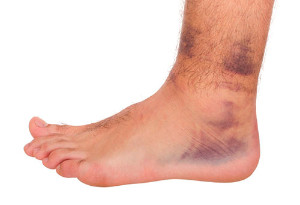
(616) 846-3400
Fax: (616) 846-3406

(616) 846-3400
Fax: (616) 846-3406

Understanding the variance between high and low ankle sprains is vital for accurate diagnosis and appropriate treatment. Low ankle sprains, commonly known as lateral ankle sprains, affect the ligaments on the outside of the ankle and are prevalent in sudden twists or rolls of the foot. Conversely, high ankle sprains, medically termed syndesmotic sprains, occur when the ligaments connecting the tibia and fibula bones above the ankle joint are stretched or torn. While both injuries cause pain, swelling, and difficulty bearing weight, high ankle sprains typically involve pain above the ankle and are associated with a longer recovery period. Moreover, high ankle sprains often result from more forceful rotational movements, such as those seen in sports like football or skiing. If you have sprained your ankle, it is suggested that you confer with a podiatrist who can determine what type of sprain it is, and offer appropriate treatment solutions.
Although ankle sprains are common, they aren’t always minor injuries. If you need your ankle injury looked at, contact Dr. Robbi Young from Grand Haven Foot & Ankle. Our doctor can provide the care you need to keep you pain-free and on your feet.
How Does an Ankle Sprain Occur?
Ankle sprains are the result of a tear in the ligaments within the ankle. These injuries may happen when you make a rapid shifting movement while your foot is planted. A less common way to sprain your ankle is when your ankle rolls inward while your foot turns outward.
What Are the Symptoms?
Preventing a Sprain
Treatment of a Sprain
In many cases, the RICE method (Rest, Ice, Compression, and Elevate) is used to treat ankle sprains. However, you should see a podiatrist to see which treatment option would work best with your injury. In severe cases, surgery may be required.
It is important to ask your doctor about rehab options after you receive treatment for your injury. Stretching, strength training, and balance exercises may help the ankle heal while also preventing further injury.
If you have any questions, please feel free to contact our office located in Grand Haven, MI . We offer the newest diagnostic and treatment technologies for all your foot care needs.